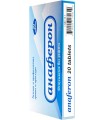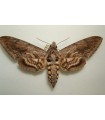Method of application and dosage
For external use.
Remove the cap, attach the dosing valve and fill the pump of the bottle with the solution before the first use (press the pump several times until an aerosol appears in the air).
If the spray bottle has not been used for a long time, the pump may need to be refilled.
The dose of the drug depends on the indications and the size of the surface to be anesthetized.
With each spraying of 1 portion of the spray, 4.8 mg of lidocaine (1 dose) is released onto the surface.
In order to avoid high concentrations of the drug in the blood plasma, it is important to use the smallest dose that provides a satisfactory effect.
Estimated doses for various indications:
|
Indication |
Dose (number of pressures) |
| Dentistry |
1-3 |
|
Maxillofacial surgery |
1-4 |
|
Otolaryngology |
1-4 |
|
Endoscopy |
2-3 |
|
Obstetrics |
15-20 |
|
Gynecology |
4-5 |
|
Dermatology |
1-3 |
Usually 1–2 sprays are enough, although 15–20 sprays or more are used in obstetrics (maximum dose 40 sprays/70 kg of body weight).
With the help of a cotton swab impregnated with Lidocaine, a 10% spray, the drug can be applied to large surfaces.
Application to children.
In dentistry or maxillofacial surgery, Lidocaine spray can be applied to children by tampon application, which avoids the risk of inhaling the drug and the burning sensation that usually occurs as a side effect of the drug. Children under 2 years of age can use the drug in the same way.
Children
The drug is used in pediatric practice.
Suppressing the pharyngeal reflex and reaching the larynx and trachea (risk of aspiration), lidocaine suppresses the cough reflex, which can lead to bronchopneumonia.
For children under 2 years of age, it is advisable to apply the drug using a lidocaine-impregnated cotton swab.



